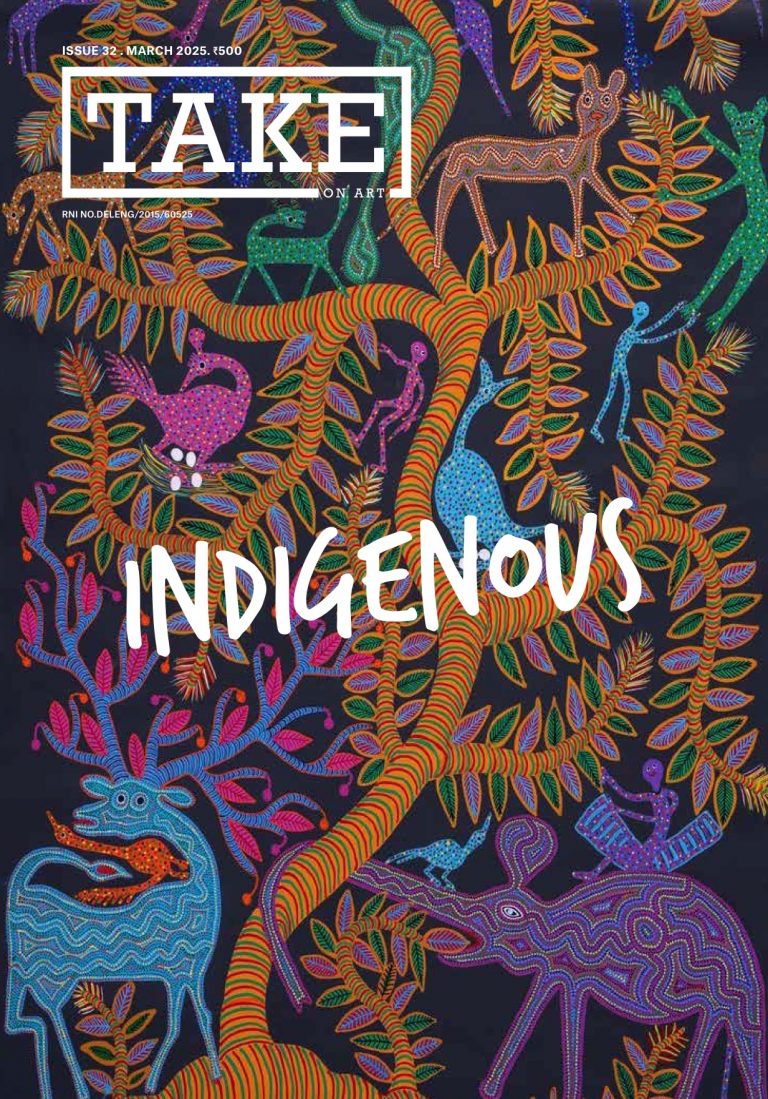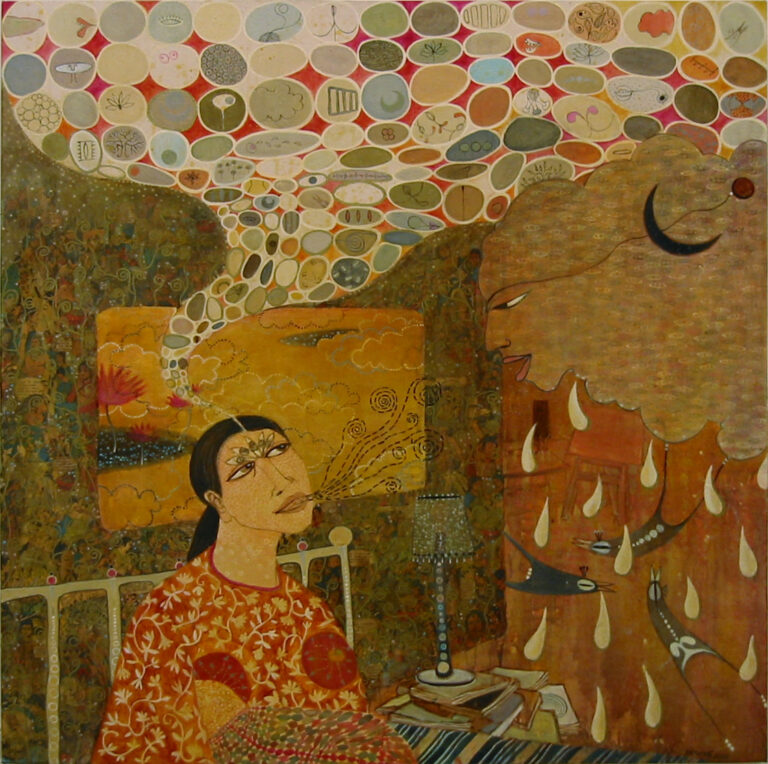Bhavna Kakar in conversation with Saskia Fernando
Bhavna Kakar (BK): In establishing KALĀ as a platform for contemporary South Asian art, how does the inaugural exhibition reflect, disrupt or expand dominant narratives surrounding regional artistic identities?
Saskia Fernando (SF): Beyond the exhibition, the objective of KALĀ via its multi-faceted approach to exhibition, residency, talks and collaborative presentation has enabled us to focus on engaging with South Asia. We stated at the beginning of this project via the nature of our organization we would enable disruption simply by not adhering to existing structures. This has been challenging for us to communicate because the arts community responds with more ease to existing frameworks. Looking at the exhibition as one example, the most important part of the process was the mentorship that took place between Senior Curator Sandhini Poddar and the exhibition curator Mariyam Begum. It is easier to perceive our intentions within the space as curatorial while in fact the process of mentorship was our priority. This fluid approach would also provide us with the possibilities of disrupting and expanding our already established, and sometimes, problematic frameworks that oftentimes do not translate well into the South Asian region. I also feel that our goal is not to be a disruptor, rather our aim is to celebrate those who are doing that work and via collaboration we can bring to light the multitude of narratives that exist within this space.
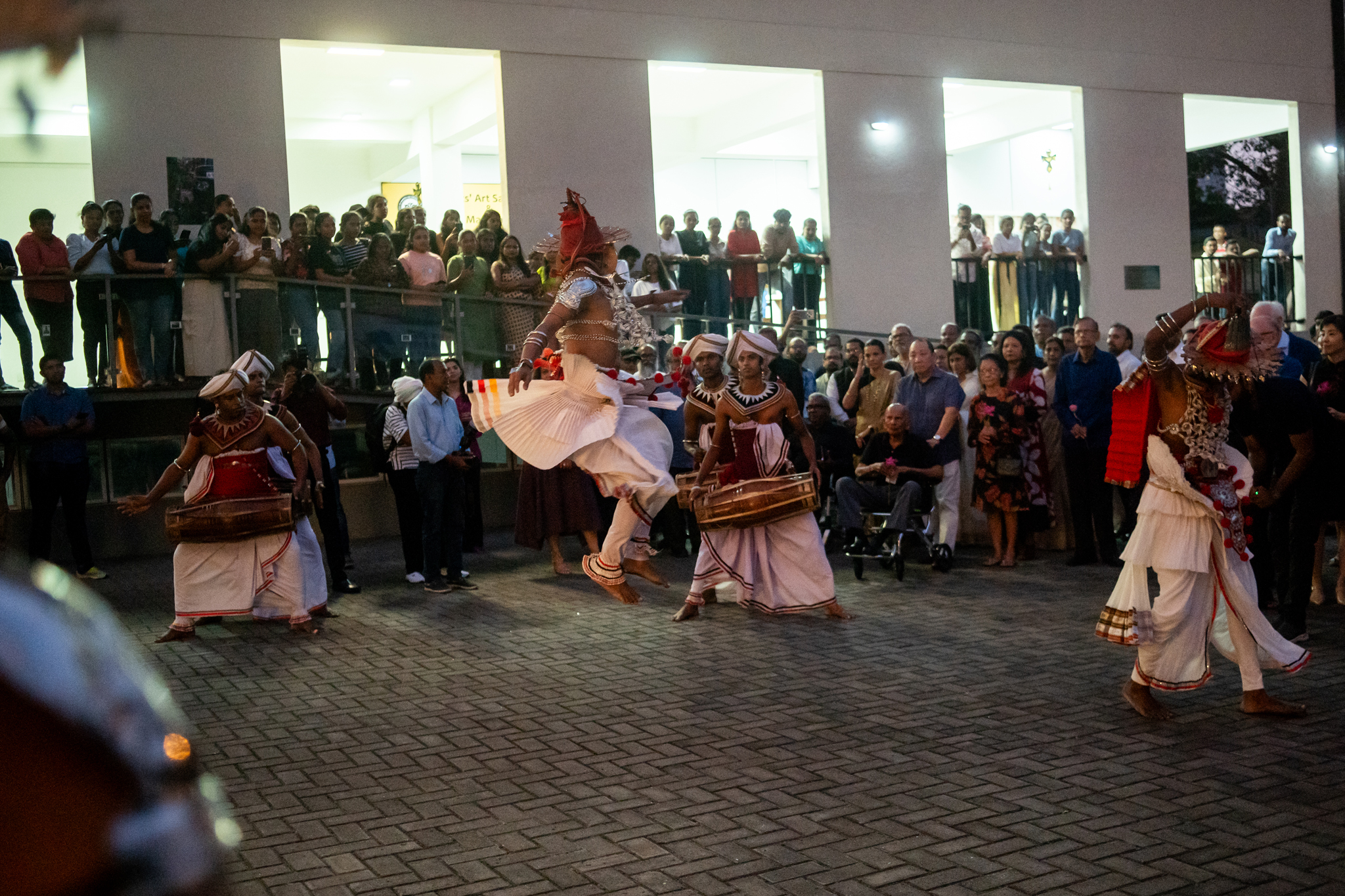 KALĀ Opening Ceremony
KALĀ Opening Ceremony
BK: In what ways does the inaugural exhibition set a precedent or foundational tone for the future evolution of KALĀ as an institution?
SF: The inaugural presentation that took place at the Lionel Wendt Arts Centre provided an opportunity to a young curator to work under the mentorship of an international senior curator. Via this process we were able to focus on building young curatorial practice within Sri Lanka. The exhibition looked at the archive of Lionel Wendt and contemporary responses to, thereby building the conversation around Sri Lankan modern and visual art practice. In our second edition we were able to host the Open Studio exhibition of artists invited to the University of Visual and Performing Arts in Colombo from Bangladesh, Pakistan, India, Nepal and Sri Lanka so began our engagement with the region. The residencies held within the university premises created an engagement that ensured ripple effects on the young artist community and experimentation and exposure with new forms of practice within the existing curriculum.
BK: What conceptual and theoretical frameworks informed the curatorial vision of KALĀ’s inaugural exhibition and how was this vision operationalized through the exhibition design and artist selection?
SF: In our first edition, we opened up an intergenerational conversation on Sri Lankan modern and contemporary art with Lionel Wendt as a point of convergence and departure. The artist’s penchant for experimentation, the subjects that were focal to his practice including his aesthetic sensibility set the tone for the exhibition. This first edition of Pivot Glide Echo allowed for us to not just celebrate Lionel Wendt, but also refresh our understanding of Sri Lankan contemporary and modern art history. While the exhibition aimed at being an intergenerational conversation between artists spread across eight decades, it also permitted us to present to an international stage a glimpse of Sri Lankan art history that gets missed in academic discourse that is often focused on the 43 Group and the Civil War. In our second edition too, we carried forward the momentum of this first edition, to underscore the versatility of Sri Lankan art practitioners, and the influences, both local and global, that shaped the visual art landscape.
 Round Table with Theseus Chag, Dominic Sansoni and Sebastian Ponsingis
Round Table with Theseus Chag, Dominic Sansoni and Sebastian Ponsingis
BK: What curatorial methodologies were applied in selecting the participating artists, and to what extent were thematic, geographic, or conceptual considerations prioritized?
SF: Artists taking part in KALĀ either via exhibition, residency, talks or collaborative projects have been selected by different processes depending on the format, while our brief has been both geographical and focused on the development of the visual arts community locally. The two editions of Pivot Glide Echo have been humble presentations aimed at celebrating the versatility that defines Sri Lankan art, and thus it was imperative to include artists working in Sri Lanka and from the diaspora who in their breadth and depth reflect this. Thus Lionel Wendt, in the first edition, and David Paynter, Tissa Ranasinghe and H.A. Karunaratne in the second edition become pivots that guide the conversation on Sri Lankan art history. With these practitioners as points of convergence and divergence, the exhibition looked into contemporary and modern art practitioners who shared resonances with them. Within the KALĀ Commune Residency Artists were selected with advice from experts within the region. In Pakistan we approached Professor RM Naeem, in Jaffna we approached Dr Shanaathanan, in India we approached the Art Alive Foundation and the Universities connections with Santiniketan, in Nepal we approached Siddhartha Arts Foundation and in Bangladesh we reached out to the team at Dhaka Art Summit. For the talks platform we worked with Art South Asia Project in London, Asia Society in India and Good Life x in Colombo and these two wonderful organisations spearheaded the selections of talk panelists with their own expertise.
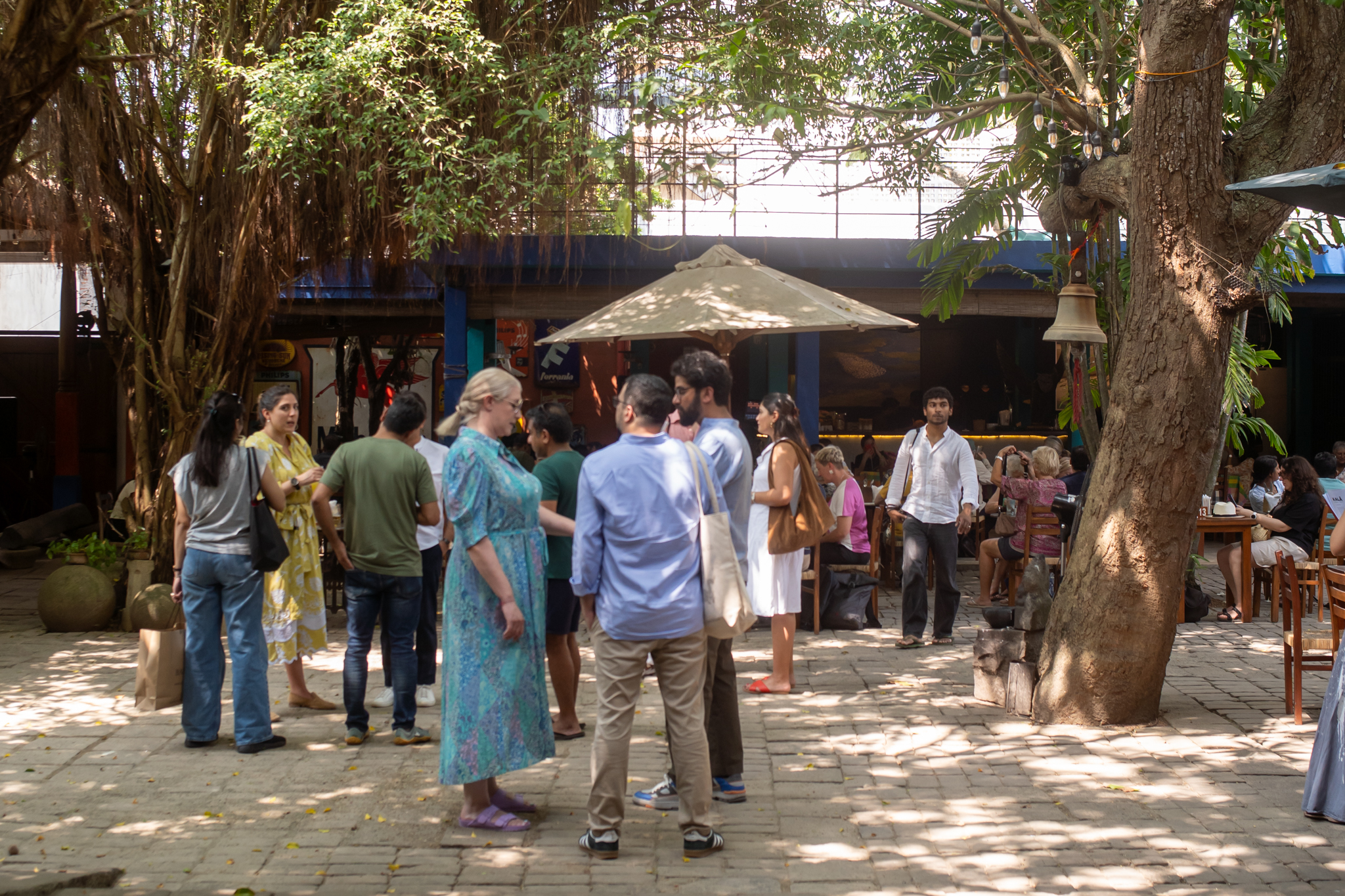 Welcome Lunch at Barefoot
Welcome Lunch at Barefoot
BK: What specific challenges and opportunities arise when presenting contemporary Sri Lankan art within international curatorial and commercial contexts?
SF: We face the challenges of any smaller art scene when engaging with the international arts community but I feel that our objective should always be to connect on however small or a large a scale and not become frustrated by the challenges we face. The beauty of engagement and those who are inspired by what is happening in Sri Lanka is what is meaningful. This in turn inspired how we approach KALĀ and our commitment to growth and building engagement. We consistently think about how we can invest funding into meaningful engagement. I say we face more challenges in our local environment than we do in the international one. An art scene that has been under represented for decades is now seeing change and with that comes a competitive spirit that the environment is not accustomed to. Locally we need better collaborative efforts to sustain growth for the arts ecosystem.
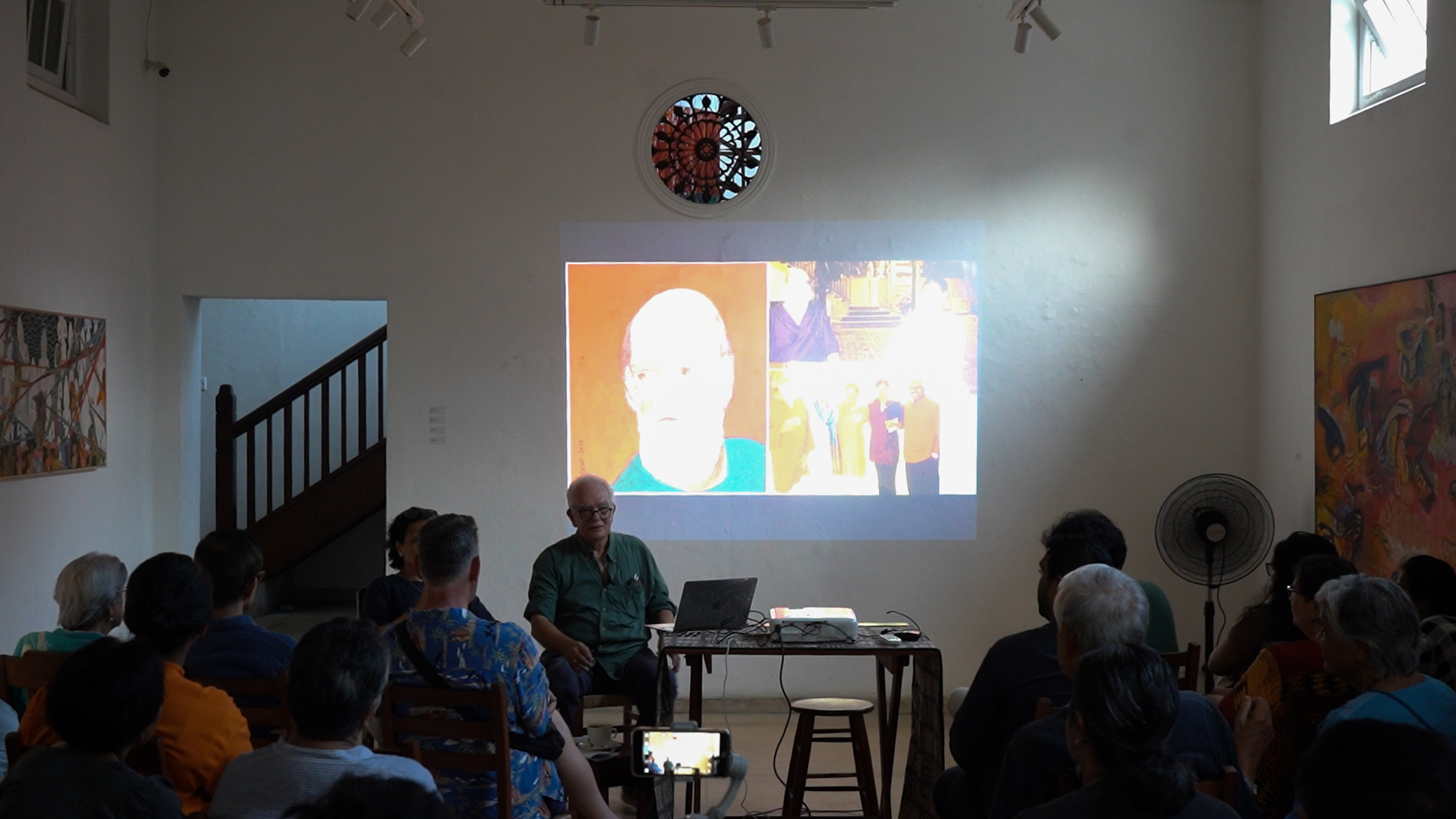 Gallery 706, Colombo
Gallery 706, Colombo
BK: How are emerging Sri Lankan artists engaging with or subverting traditional visual languages, and what implications does this have for contemporary aesthetic discourse?
SF: Sri Lanka presents a fertile, under-explored ground for artistic exploration. Rather than thinking of how artists are engaging with or subverting traditional visual languages it is interesting to note the broadening horizons of visual expressions, particularly in comparison to the larger South Asian and global context, and how they are responding to a very dynamic and rapidly evolving and shifting ecosystem. It is a questioning of accessibility and expanding artistic ecosystems. Art institutions and networks can play a crucial role in this environment by creating opportunities to nurture artistic exploration, as has been the case with other South Asian countries where such institutional interventions had taken place a few decades earlier.
BK: How have histories of colonialism and civil conflict shaped both the production and reception of contemporary art in Sri Lanka, particularly in your curatorial experience?
SF: The civil war narrative has dominated much of the visual imagination with an urgency that continues to exert its force on artistic production even after a decade of the civil war having come to an end. As far as contemporary art in Sri Lanka has been concerned, much of the focus has lingered on the production of art that were direct responses to the Civil War as artists critiqued failed systems and ideologies, and the impact it has had on Sri Lanka’s social and cultural landscape. While works by Sri Lankan artists encapsulates postcolonial responses, as a broad thematic area a lot of exciting work can be done in contextualizing and examining it within the broader South Asian art history. Explorations of Sri Lankan art within the South Asian context have often been narrowly framed, with disproportionate focus on the civil war, and occasionally on the 43 Group, thereby overlooking broader histories and more diverse trajectories in the island’s visual culture. Our attempt with the two editions of Pivot Glide Echo has been to offer a slight detour, and instead showcase the breadth and depth of art production while acknowledging the sociocultural and historical contexts of their creation.
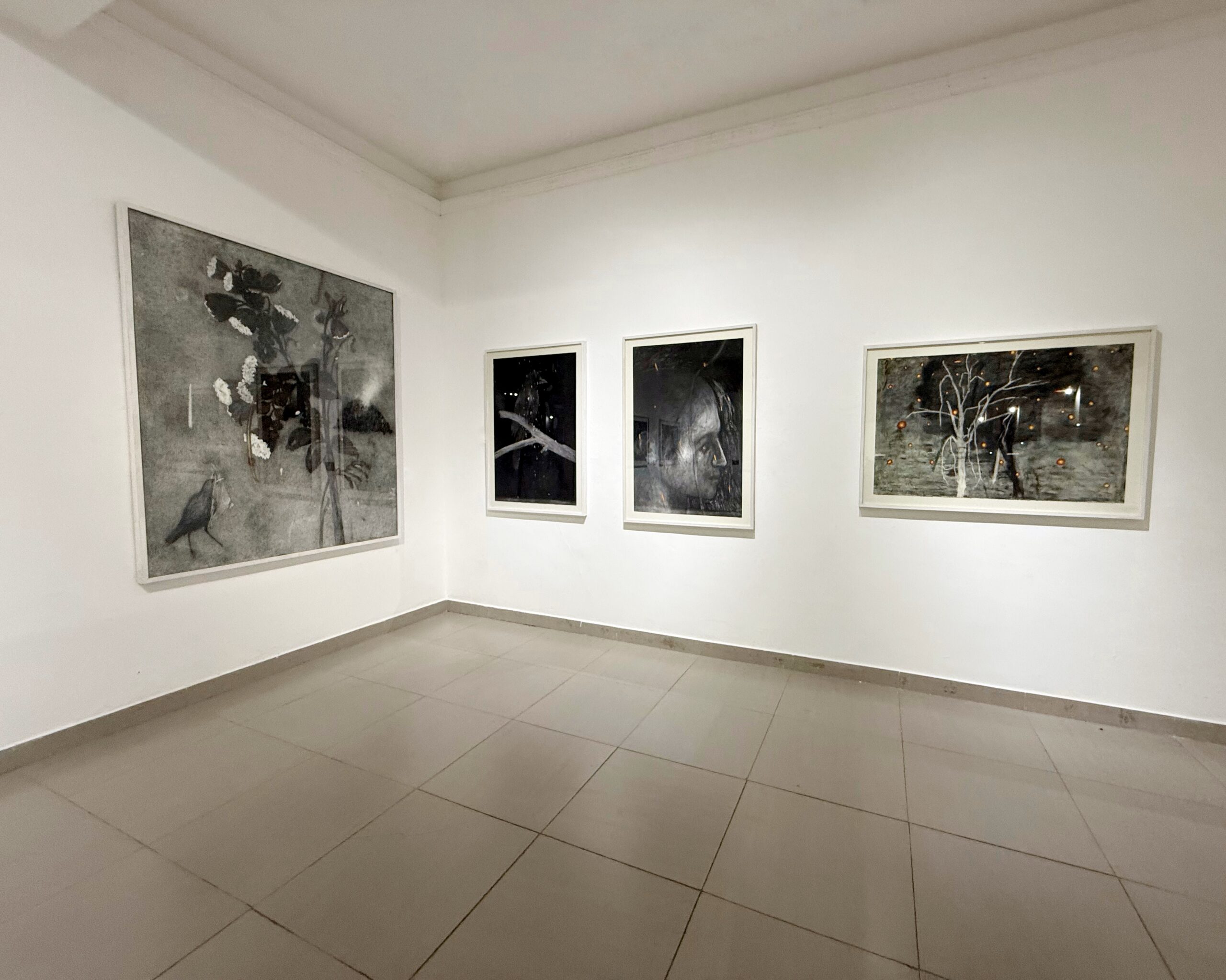 Installation view
Installation view
BK: To what extent does the Sri Lankan art ecosystem remain self-contained or insular, and how does KALĀ function as a mediating force within transnational South Asian networks?
SF: While Sri Lanka’s art ecosystem has remarkable depth and originality, it has historically remained somewhat self-contained partly due to geographic and political isolation, and partly because of limited institutional frameworks for sustained international engagement. There is a strong local community and a vibrant practice, but visibility and access to regional and global networks have often been uneven. KALĀ was established precisely to address this gap. It functions as a mediating force by creating intentional spaces for exchange: connecting Sri Lankan artists with their South Asian peers through residencies, exhibitions, and dialogue-based platforms. Rather than positioning Sri Lanka as a peripheral participant, KALĀ helps embed it meaningfully within wider South Asian narratives, while also respecting the distinctiveness of its local context. Our goal is to foster reciprocal learning and collaborative growth, not just outbound visibility.
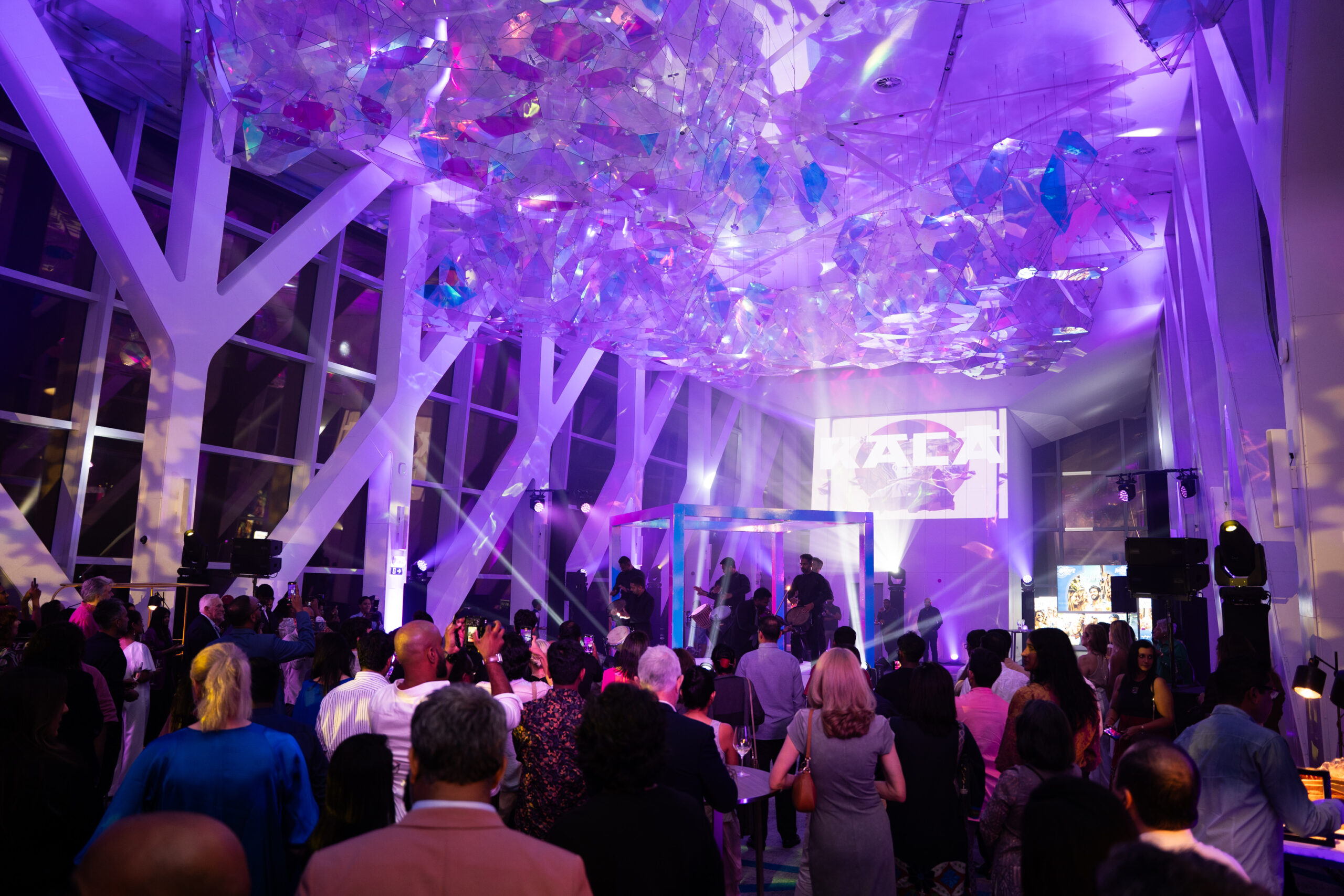 KALĀ Art Party at Cinnamon Life
KALĀ Art Party at Cinnamon Life
BK: What visual or conceptual trends are discernible among younger Sri Lankan artists, and how are critics, collectors, and curators interpreting these trends both regionally and globally?
SF: There is a certain preoccupation with the experiences of the civil war and its aftermath that continues to seep into the imagination of younger artists, shaping their visual language. Their concerns are often relayed through the impact the civil war years continue to have on Sri Lanka’s geopolitics, economy and society. However, it is also an exciting time to watch out for emerging voices. 16 years since the civil war, artists are also finding a space to experiment and engage with directions that do not carry the parlor of conflict, in fact it is even removed from it, and it will be exciting to watch out for some of these while nurturing their creativity.
BK: How does KALĀ negotiate the tension between market imperatives and curatorial autonomy, especially in relation to emerging or politically engaged practices?
SF: KALĀ is a non profit platform, and our efforts are to engage with the art scene at large in both our local and regional environment. We have no objective to negotiate between these tensions. Our curatorial programs focus on the development of young curatorial practice, while we refrain from any commercial presentations. We are supporting development of the local industry and trying to learn from the region while using our island’s accessible nature to assist young emerging talent from the South Asian region to use our platform for visibility.
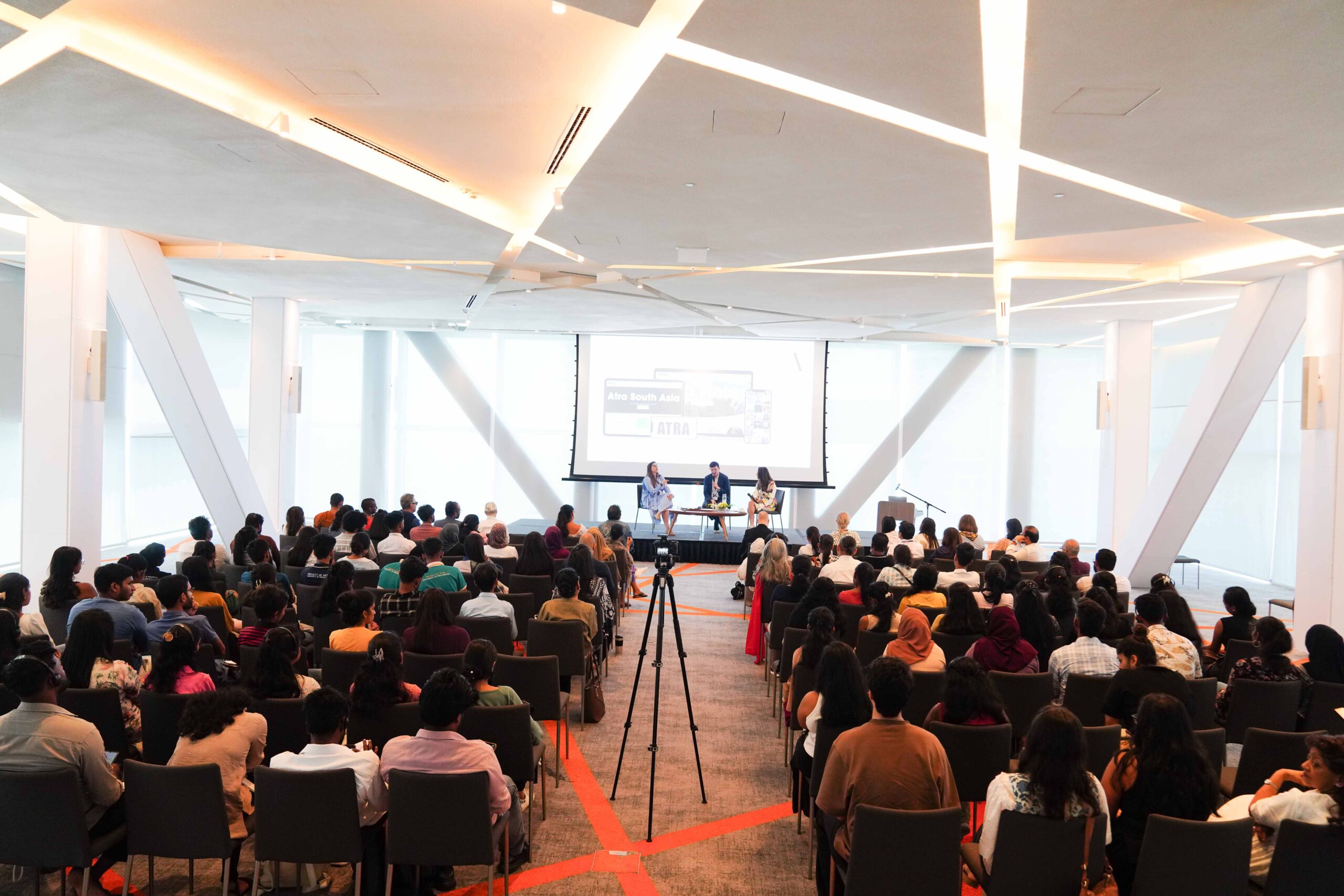 KALĀ x ASAP Panel
KALĀ x ASAP Panel
BK: What role do local and diasporic forms of patronage play in shaping the trajectories of Sri Lankan artists and the broader art infrastructure?
SF: I would say patronage in Sri Lanka from both the local and diasporic communities needs to grow with a deeper understanding of the long term growth of the arts infrastructure. The art world in Sri Lanka has become very active now after quite a lull and the result is a hyper competitive environment with a very small pool of corporate and private patrons, as a result the environment lacks focus and direction. KALĀ’s objective within this space is to widen the understanding of what patronage is and hopefully, eventually to reduce the politics within the space by developing a larger engagement and comprehension of the arts community from potential stakeholders.
BK: How are issues of censorship, self-censorship, or political sensitivity navigated in the presentation of experimental or critical works from Sri Lanka?
SF: This has not been an issue we have faced to-date within the frameworks of our presentations.
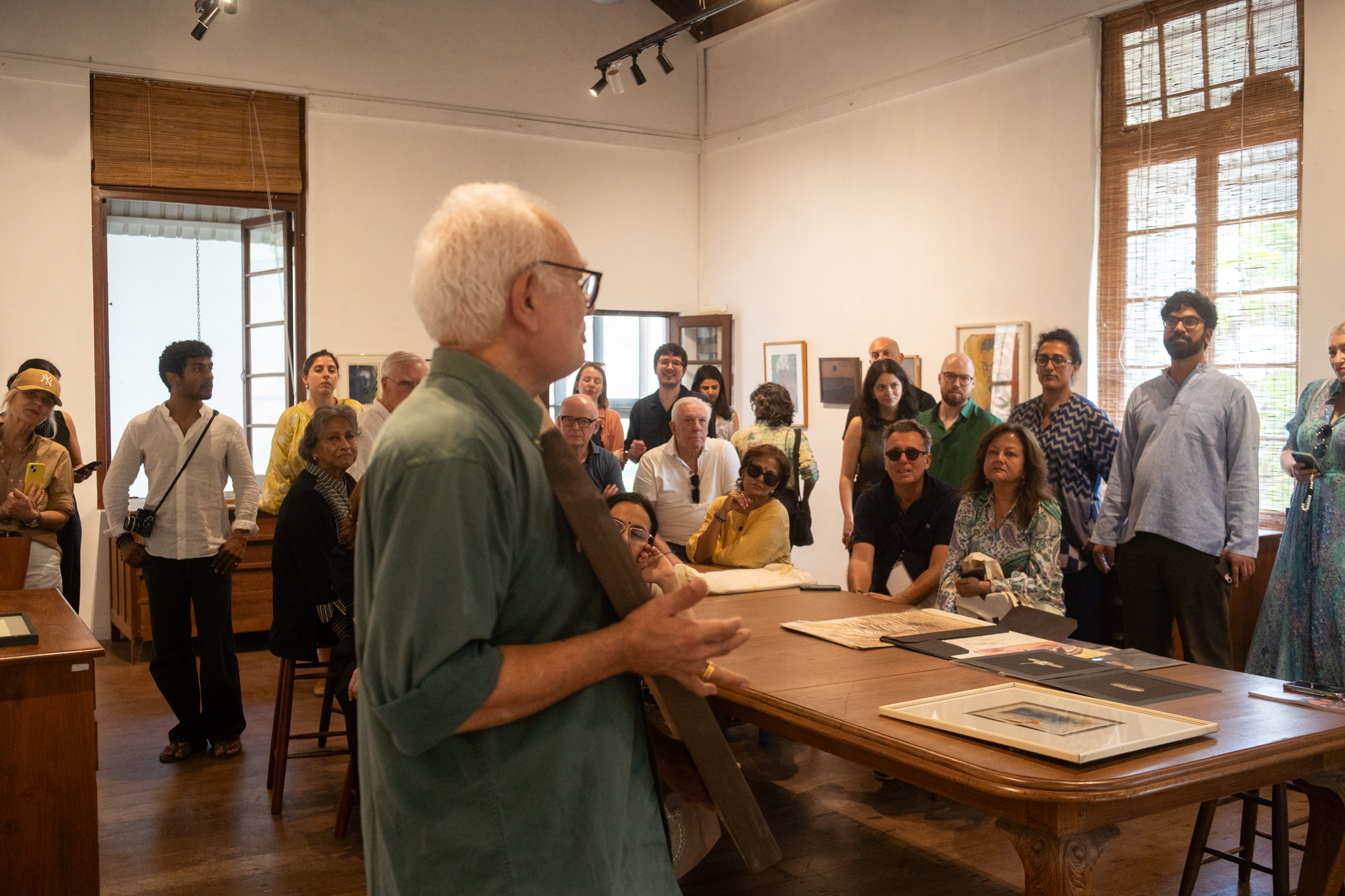 Dominic Sansoni at Barefoot Gallery
Dominic Sansoni at Barefoot Gallery
BK: How KALĀ may intervene in or contribute to reframing the global perception of Sri Lankan art, positioning it not as peripheral but integral to contemporary South Asian discourse?
SF: Sri Lankan art has often been seen as peripheral within the South Asian context, but at KALĀ we see it as deeply connected to the region’s shared histories and contemporary concerns. Through curated collaborations, residencies, and critical dialogue, we create spaces where Sri Lankan artists can be in collaboration and conversation with their regional peers. This not only amplifies their voices but also helps reframe Sri Lanka as an essential contributor to South Asia’s contemporary art narrative.











